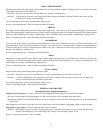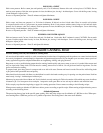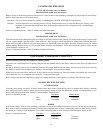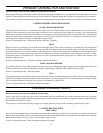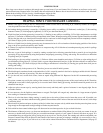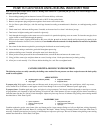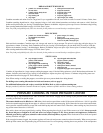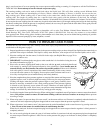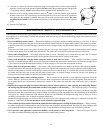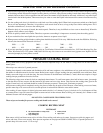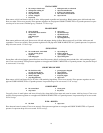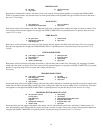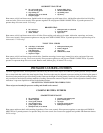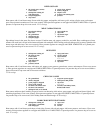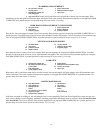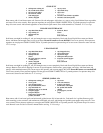
21
8. After the air vent/cover lock and overpressure plug have dropped and no steam escapes when the
regulator is tilted, remove the pressure regulator. Do not remove the pressure regulator until pressure
is completely reduced. Always remove the pressure regulator before opening the cover.
9. Remove cover by turning counter-clockwise until the
V
mark on the body handle aligns with the
V mark on the cover. Lift cover toward you to keep steam away from you. If the cover is locked or
turns hard after the regulator is removed, there may still be some pressure in the canner. The cover
should not be forced off. Cool the canner until the body is cool enough for the cover to be removed
easily.
10. Remove food and serve.
iMPoRTanT safeTY infoRMaTion
Cooking under pressure enables you to prepare food both quickly and deliciously. If used properly, your pressure canner is one of the
safest appliances in your kitchen. To ensure safe operation, make sure you always observe the following simple rules whenever you use
the pressure canner:
1. Never overfill the pressure canner. — The pressure regulator is designed to maintain cooking pressures at a safe level. It relieves
excess pressure through the vent pipe as it rocks back and forth. Many foods tend to expand when cooked. If the canner is overfilled,
expansion of food may cause the vent pipe to become blocked or clogged. If the vent pipe becomes blocked, it cannot relieve excess
pressure.
There are a few foods such as rice, grains, dry beans and peas, and soups which expand so much or foam and froth while cooking
that the canner should never be filled more than half full. For other foods, never fill the canner more than two-thirds full.
2. Always add cooking liquid. — If an empty pressure canner is left on a hot burner or if a canner boils dry and is left on a heated
burner, the canner will overheat excessively causing possible discoloration and/or warping of the canner.
3. Always look through the vent pipe before using the canner to make sure it is clear. — If the vent pipe is blocked, it cannot
function as it should and thus cannot relieve excess pressure. Pressure may then build to unsafe levels. To clean the vent pipe, draw
a pipe cleaner or small brush through the opening, as shown on page 4. Also clean the vent pipe nut as shown.
4. Always fully close the pressure canner. — The canner is fully closed when the cover handles are directly above the body handles.
Your pressure canner has specially designed lugs on the cover and body which lock the cover in place when the canner is fully closed.
However, if the canner is not fully closed, the lugs cannot lock the cover onto the body. It’s possible that pressure could build inside
the canner and cause the cover to come off and result in bodily injury or property damage. Always be sure the cover handles are
directly above the body handles. Do not turn past handle alignment.
5. Never open the canner when it contains pressure. — The air vent/cover lock provides a visual indication of pressure inside the
canner. When it is up, there is pressure. When it is down, there is no pressure in the canner and it can be opened. If the pressure can-
ner is opened before all of the pressure is released, the contents of the canner will erupt and could cause bodily injury or property
damage.
6. Replace the overpressure plug if it is hard, deformed, cracked, worn or pitted, or when replacing the sealing ring. Replace
the sealing ring if it becomes hard, deformed, cracked, worn, pitted, or soft and sticky. — The overpressure plug is a secondary
pressure relief valve which is designed to relieve excess pressure by releasing from the canner cover in the event that the vent pipe
becomes blocked. The overpressure plug is made of rubber, and when new, is soft and pliable. Over time, depending on the frequency
and type of use, rubber becomes hard and inflexible. When hard and inflexible, the overpressure plug loses its ability to act as a
secondary pressure relief valve. It should be replaced immediately.
Should the overpressure plug ever be forced out of the cover due to excess pressure while cooking, it is important to call the Test
Kitchen at 1-800-368-2194. Do not attempt to use the released overpressure plug.
7. Always follow special procedures found in the instruction book when pressure cooking dry beans and peas. — During cooking,
dry beans and peas tend to froth and foam which could cause the vent pipe to become blocked. Therefore, dry beans and peas need
to be soaked and cooked according to the specific recipe. Using this method will keep foam at safe levels during cooking.
8. Never pressure cook applesauce, cranberries, rhubarb, cereals, pastas, or dried soup mixes. — These foods expand so much
as a result of foaming and frothing that they should never be cooked under pressure.



